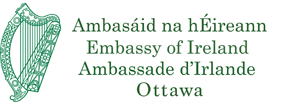Irish Film Night
22 May 2015 | 8:00 p.m. to 9:00 p.m.
NSCAD University Academy building – corner of Sackville and Brunswick
Oidhche Sheanchais
(Robert Flaherty, 1935, 12m, Irish w/English subtitles):
From the programme notes of the Harvard Film Archive: “A lost film until the 2013 discovery of a 35mm nitrate print at Harvard University, Robert Flaherty’s 1935 short film Oidhche Sheanchais offers a disarming and fascinating distillation of his ardent belief in cinema as a mythopoeic art and folkloric tradition.... Oidhche Sheanchais, was recorded entirely in the dialect of the Aran Islands and is, in fact, considered the first talkie in the Irish language.”
Aran of the Saints
(Catholic Film Society of London, 1932, 28m, silent with live accompaniment by Nova Scotia fiddler Cassie MacDonald):
From the programme notes of Town Hall Theatre, where this was shown in 2011: “Providing a richly textured counterpoint to the elemental extremes of Flaherty’s Man of Aran (made two years later in 1934), the film presents the islands’ inhabitants in many of their day-to-day activities: school going, church attending, fishing, farming, weaving and playing tag in the lush green fields.”
His Mother
(Sidney Olcott, 1912, 11m, silent with live accompaniment by by Nova Scotia Cassie MacDonald):
One of eight surviving films made by the American Kalem Company in Ireland between 1910 and 1915. Directed by Canadian-born Sidney Olcott, His Mother is a simple story of a talented country fiddle player who leaves his peasant roots in Ireland for the bright lights of the New York stage—but he abandons his poor long-suffering mother along the way. The film was shot on two continents in rural and urban locations.
Igloo a Thógaint
(Douglas Wilkinson / National Film Board of Canada, 1949, 10m, Irish w/no subtitles):
How to Build an Igloo is one of the most famous films to be made by the National Film Board of Canada. In its day, the film was distributed internationally—and dubbed into local languages. It’s now mostly remembered affectionately as a slightly quaint dispatch from a time of greater cinematic innocence. We are particularly happy to present a genuine cinematic rarity, for which we are confident no translation will be necessary.
A special presentation in partnership with
 |
Canadian Association
|
 |
 |
